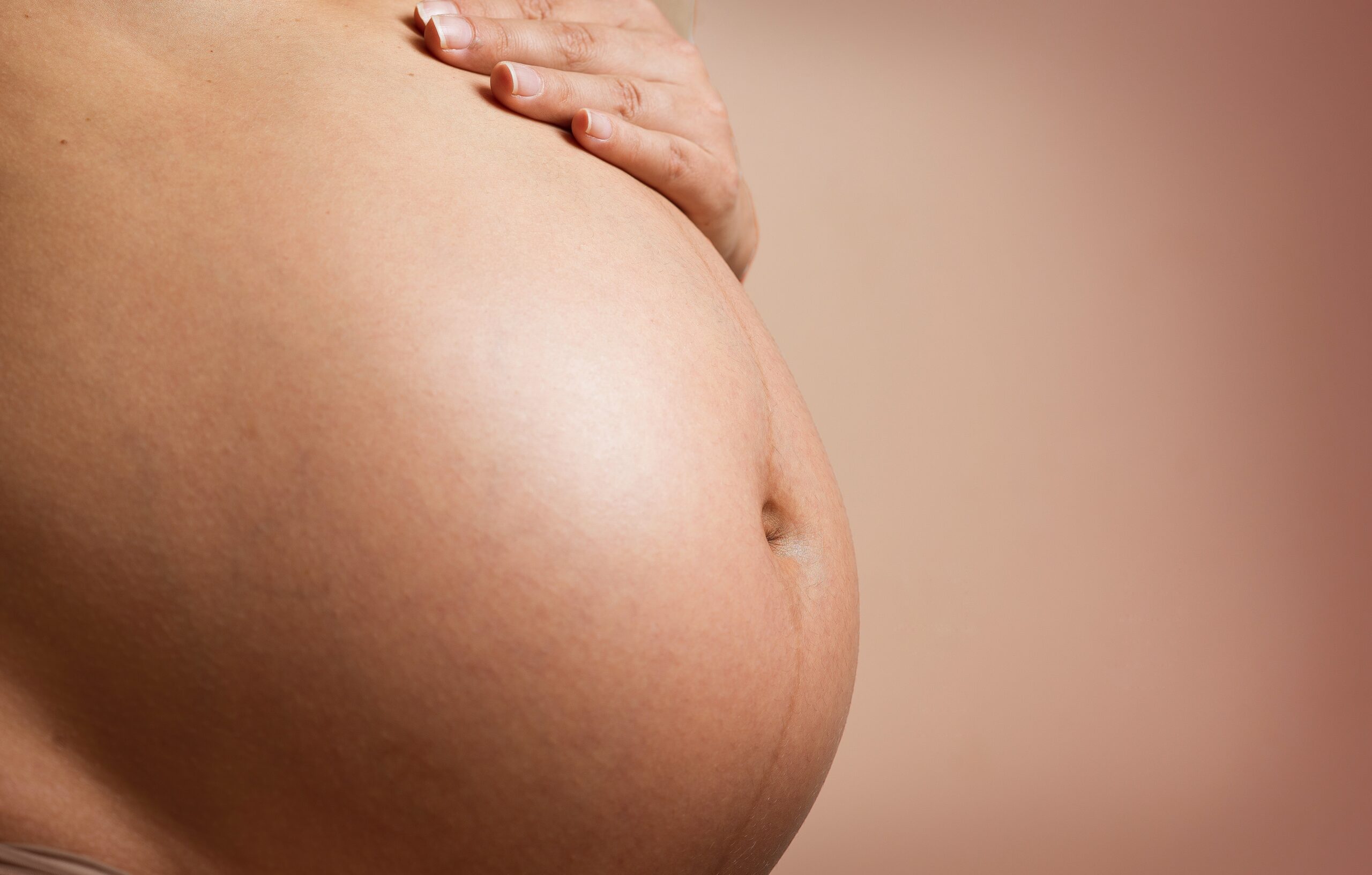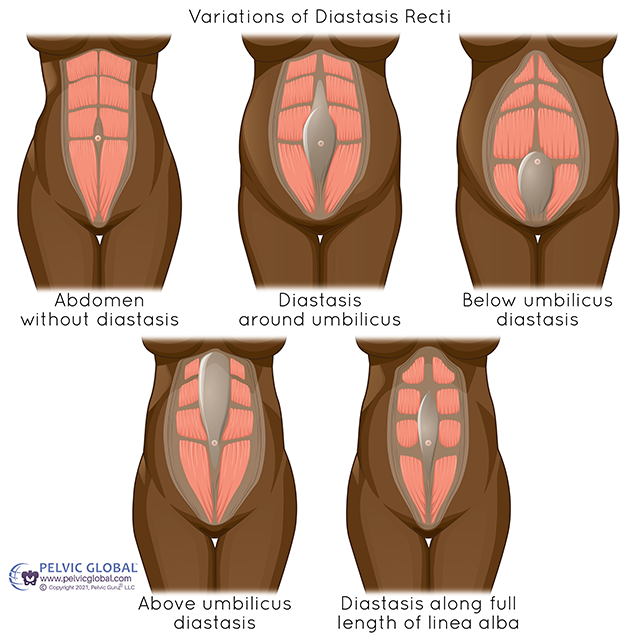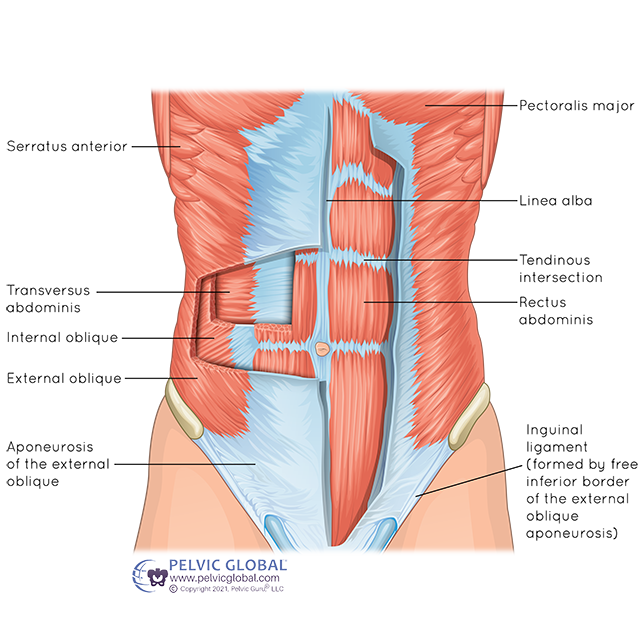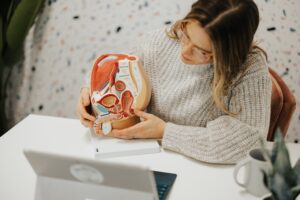
Separated at Birth: What is Abdominal Separation (Diastasis Recti) and What Can You Do About It?
If you recently gave birth, you may have noticed that your post-pregnancy tummy looks a little different than it did before you had kids. That’s because, during pregnancy, the rectus abdominis muscles (the “six-pack” muscles) separate at the midline of the stomach. This happens for 100% of birthing people during pregnancy. But when the muscles don’t return to each other after 6-8 weeks? This condition is called diastasis recti or abdominal separation. It is relatively common, affecting an estimated 60% of pregnant people. And the good news is that it can be corrected with physical therapy in most cases!
What Causes Abdominal Separation?
Diastasis Recti, commonly referred to as DRA or abdominal separation, is a condition in which your 6-pack muscles or rectus abdominis separates. During pregnancy, the growing uterus puts pressure on the rectus abdominis muscles, causing them to stretch and tug at their attachments to the sternum (breastbone). This can cause a horizontal gap to form between the two sides of the muscle, known as abdominal separation.

It is VERY common during pregnancy as research shows that -27% of birthing people demonstrated abdominal separation in their 2nd trimester. It is important to note that the baby is only 13-16 inches long and 2-3 pounds by the end of the 2nd trimester and your body is already being affected
From there the numbers really only go up. By the 3rd trimester 66% demonstrate DRA and 100% of birthing people demonstrate DRA at 35 weeks of gestation.
In some cases, abdominal separation may also be caused by repetitive strain injuries such as heavy lifting or coughing.

What Are The Signs of Abdominal Separation (diastasis recti)?
The most common sign of abdominal separation is a vertical bulge in the abdomen that becomes more noticeable when standing up from a lying down position. This bulge is often referred to as coning and is typically seen when you do an abdominal crunch, such as moving from lying flat to sitting straight up in bed. It can also be seen when moving from sitting to standing and/or when standing and bent forward at the waist.
If you are unsure if you are experiencing abdominal separation you can set your phone up and record yourself doing those moves. Watch it in slow motion during the transitional movements. Or hold your hand over the right and left side of your rectus abdominis muscles and see if you feel a bulge into your hand indicating abdominal separation.
Other symptoms of abdominal separation include:
- Decreased trunk muscle strength and endurance
- Pelvic floor dysfunction
- Urinary/bowel incontinence issues
- Sexual dysfunction
- Back/hip/pelvic pain
- Prolapse
- Postural abnormalities
Can Abdominal Separation Be Treated?
In most cases, yes! Physical therapy for abdominal separation typically involves exercises that strengthen the deep core muscles and improve posture. Treatment may also include manual therapy techniques such as massage and myofascial release to help relieve pain and promote healing. After completing physical therapy treatment, most people see a significant reduction in their symptoms.
Getting Help for Your Abdominal Separation
If you’re dealing with post-pregnancy stomach bulge or back pain, you may be wondering if your abdominal separation can be corrected. In most cases, physical therapy can help relieve symptoms and promote healing. However, I do not recommend following a one-stop-shop program that only focuses on strengthening.
For abdominal separation, I always include a comprehensive plan of care for my patients.
Your comprehensive physical therapy plan of care for abdominal separation should include:
- Pressure management training
- Lifting mechanics
- Manual therapy to the back, abdominal and pelvic muscles as well as joint mobilization
- Coordination training for proper engagement throughout the movement
- Strength training
- Posture mechanics.
As you progress through your plan of care for abdominal separation you should see an improvement of your symptoms in addition to a closing of the separation.
If you think you might have abdominal separation, contact a doctor or physical therapist for an assessment today. I offer a free, 20-minute discovery call where we can discuss your symptoms and issues to figure out the best route for your abdominal separation recovery.
Looking for additional resources on pelvic health? My YouTube channel holds dozens of videos where I offer free pelvic floor training, yoga exercises, and more. My instagram page takes a little bit more of a light hearted approach while still providing educational content. And of course, if you have a specific pelvic floor subject you’re looking for more information on, a quick search of my blogs may give you the answers you need.
More content you may like:
Some of the links on this page may be affiliate links. Laura Meihofer’s LLC is a participant in the Amazon Associates Program and others, as an affiliate advertising program designed to provide a means for sites to earn advertising fees by linking to products Laura organically uses and trusts. If you purchase a product through an affiliate link, your cost will be the same, but Laura will automatically receive a small commission. Your support is greatly appreciated and helps her spread her message!








Sorry, the comment form is closed at this time.